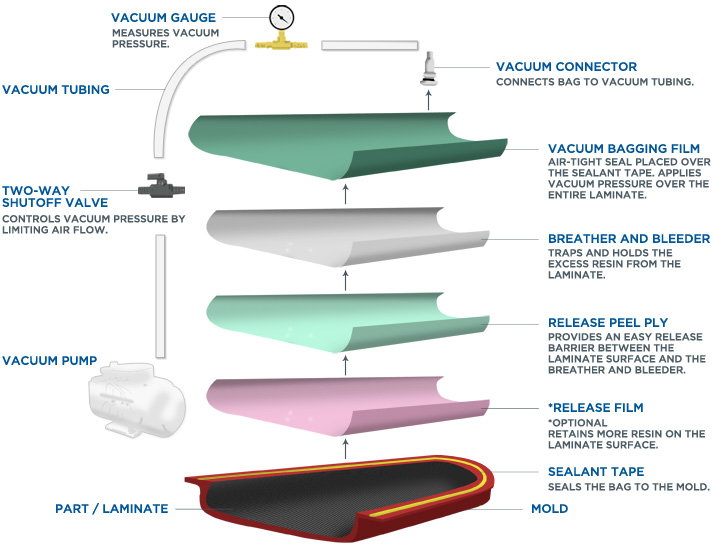7 results of permeability tests a on bleeder cloth.
Bleeder cloth laminate.
The breather fabric should be separated from the composite laminate by a release material.
Non woven construction provides good conformity easily draping over your laminate.
When the bag wrinkles against the hard laminate it traps air and the breather prevents this from happening.
As a breather it allows for vacuum pressure to be applied evenly across the entire surface of the laminate as a bleeder it permits any gases released during cure to escape.
The bleeder layer is usually a non woven synthetic fiber material that comes in a variety of different thicknesses and or weights that range from between 2 oz yd2 to 20 oz yd2.
And b on reinforcing cloth 32 fig.
As a breather it allows for vacuum pressure to be applied evenly across the entire surface of the laminate.
The bleeder ply is separated from the laminate by a porous release ply which is discarded after the part fabrication.
Breather is used in vacuum bagging cure processes to ensure pressure is applied evenly across the entire surface of the laminate.
As a breather it allows for vacuum pressure to be applied evenly across the entire surface of the laminate.
Its purpose is to provide a continuous air path for pulling vacuum on the component.
It allows great conformity around a composite part while under vacuum pressure.
Breather cloth an open weave material which acts as a path for trapped air and volatile materials which are drawn out under vacuum.
A aa zy xa 8 plies 0 i i t i i 1 b l oo 90 80 70 60 50 40 30 20 height of glycerine column cm fig.
Within your vacuum bagging lay up breather bleeder drapes easily over your laminate directly below your bagging film.
When used as a bleeder it will absorb excess resin applied during the lay up process.
8 section through laminate showing markers between plies.
Within your vacuum bagging lay up this breather bleeder drapes easily over your laminate directly below your bagging film to serve two key purposes.
The bleeder layer is used to absorb resin from the laminate either through a porous peel ply or a perforated release film as described above.
Breather cloth is recommend when working under 40 psi and is suitable in vacuum bagging applications up to 400 f 204 c when used as a breather this material allows the evacuation of air from inside.
It also permits any gases to release during cure.
Descriptionairtech s airweave is a thin stretchable high fill non woven polyester breather bleeder material designed for low pressure cures and conforms well to the contours of a part.
Top bleeder plate bottom tool plate placed between the layers of prepreg during lay up.
Fibre glast 4 ounce breather and bleeder cloth 60 inches wide 3 yard roll binder free conforms closely to contours of part by fibre glast.
The breather and bleeder layer is usually a non woven synthetic fiber material that comes in a variety of thicknesses and or weights.
Breather bleeder cloth breather cloth is a 100 non woven polyester fabric that is designed to allow airflow throughout the vacuum bagging process as well as bleed out an excess resin in a composite part.
It also permits any gases released during cure to escape.

